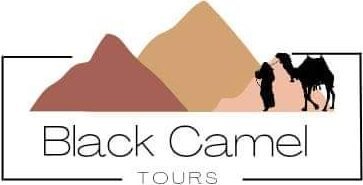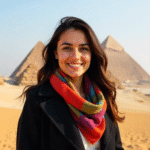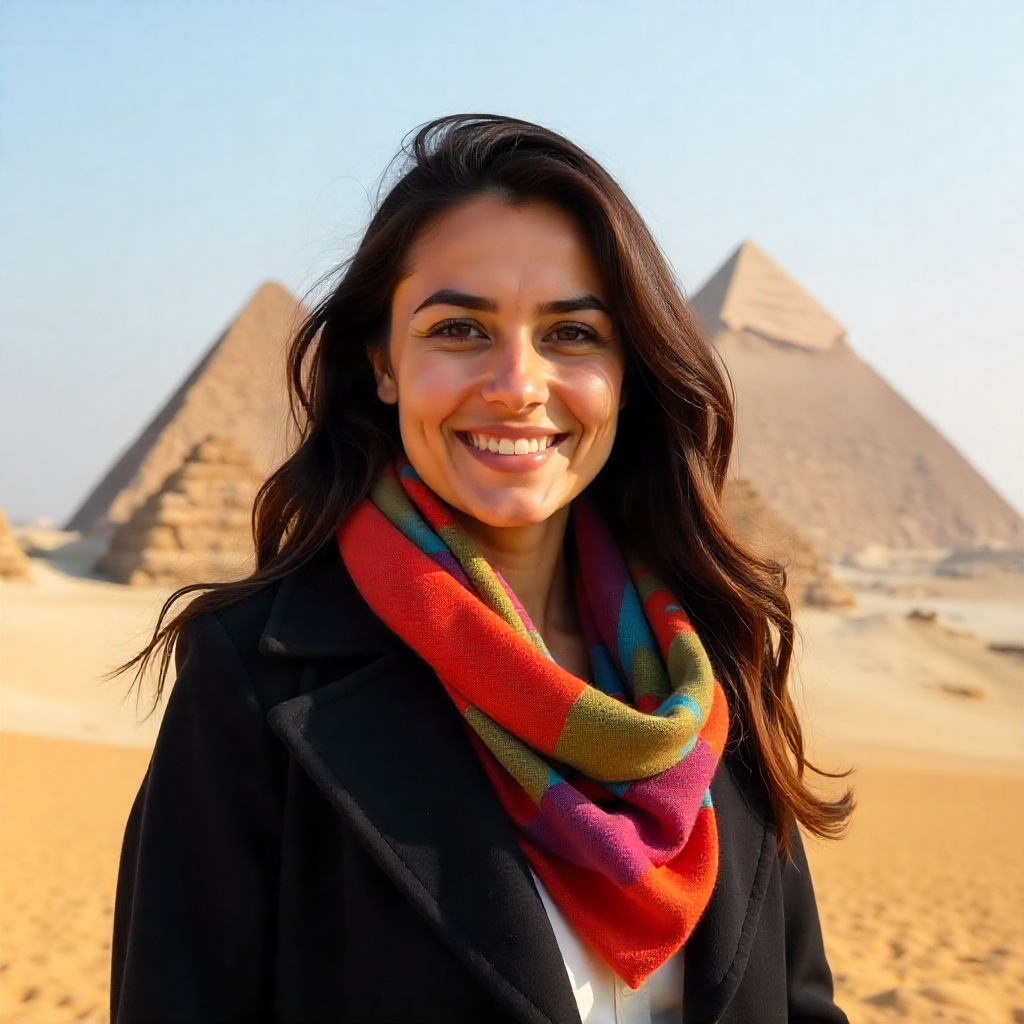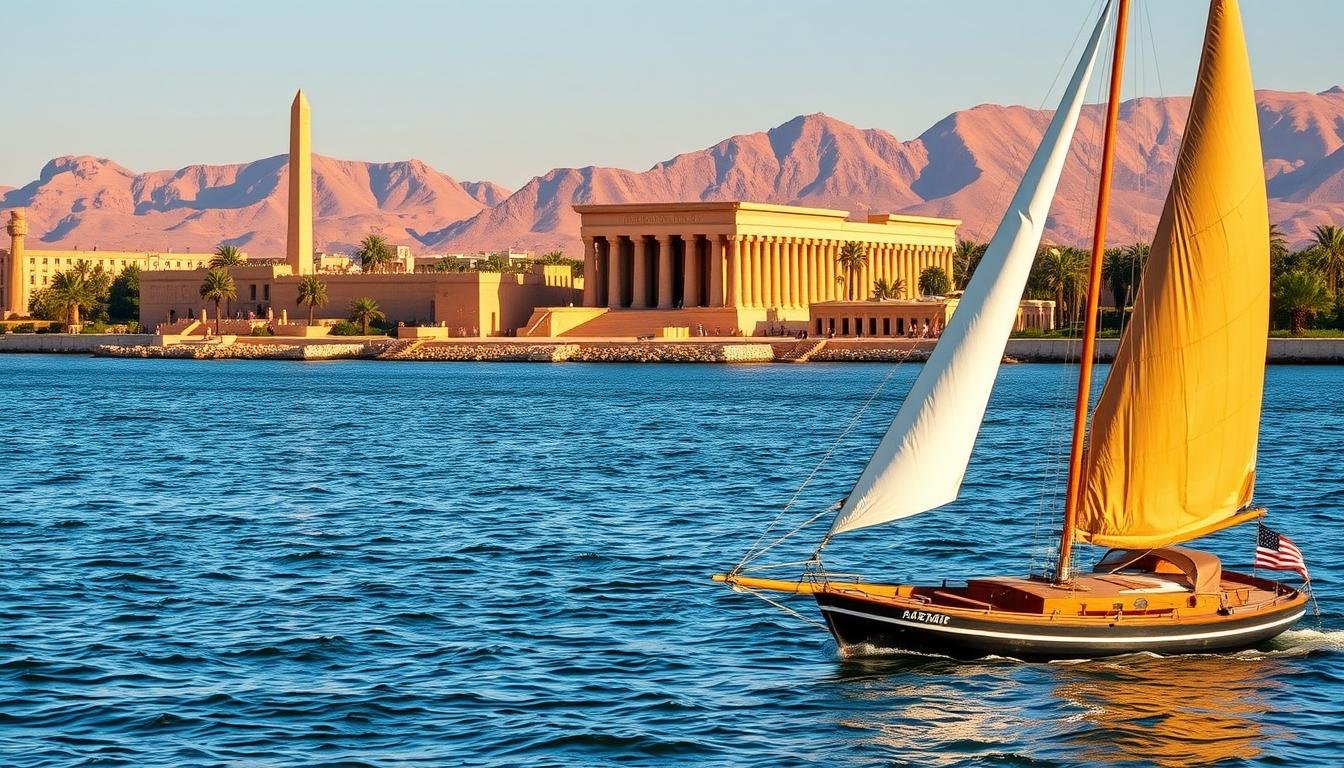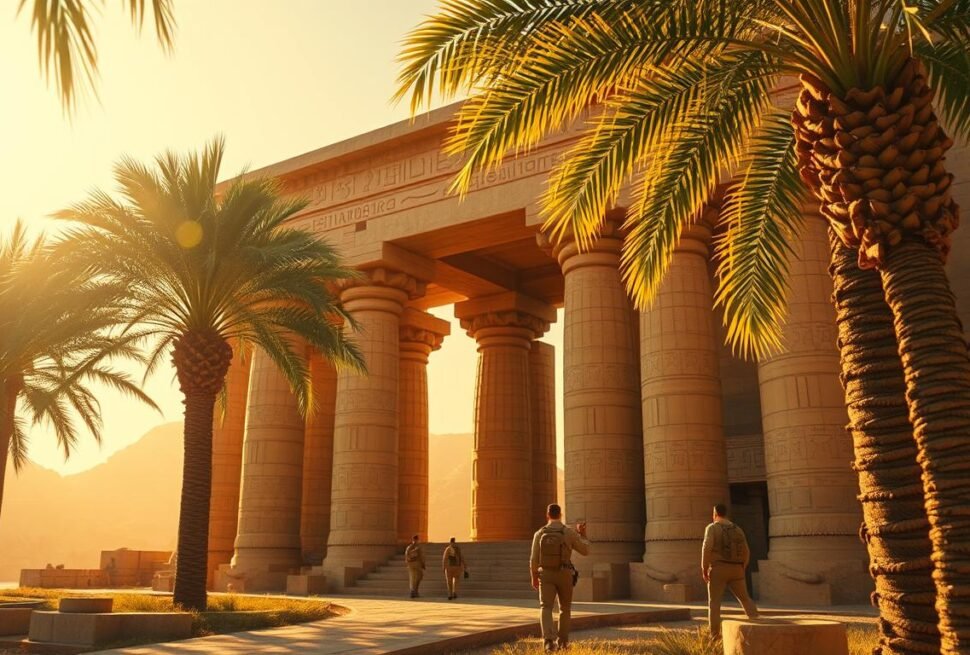Surprising fact: The city once known as Thebes was among the world’s largest cities by the 14th century BCE, a scale few travelers expect today.
The Nile frames a compact sweep of ancient sites that make this destination a dream for anyone who loves history and travel. The East Bank holds the town, hotels, Karnak and Luxor Temples. The West Bank is the necropolis, with the Valley of the Kings and Hatshepsut’s Temple.
A Nile cruise ties these stops together without rush, letting visitors glide between Karnak, Philae, Kom Ombo, Edfu, and Abu Simbel while enjoying world-class scenery.
This short guide shows the best things to see, when to go, and how to structure days so you absorb the stories behind each place. Expect practical tips on passes, transport, and hotels, plus why a professional Egyptologist guide and private driver add real value.
Plan with confidence: to book tailored itineraries and private transport, contact Black Camel Tours at 📩 Booking: Booking@blackcameltours.com | 📞 Call/WhatsApp: +43 660 9081449 | +201080733101 | 🌐 blackcameltours.com
Key Takeaways
- Luxor and Aswan form the heart of ancient Egyptian history along the Nile.
- Plan East Bank days for temples and West Bank for tombs to save time.
- A Nile cruise offers a relaxed way to connect major sites.
- Bring an Egyptologist guide and private driver for richer stories and smooth logistics.
- Book with Black Camel Tours for tailored itineraries and local support.
Why Luxor & Aswan Belong on Every First-Time Egypt Itinerary
The nile river splits the area into two clear zones. One bank hosts modern life and major temples. The other holds the ancient burial grounds and compact tomb clusters.
East Bank is the living city with hotels, restaurants, and easy services near Karnak and Luxor Temple. Most conveniences sit here, so plan hotel nights and relaxed afternoons on this side.
East Bank vs. West Bank: How the Nile shapes daily life
The West Bank is where archaeology concentrates: the Valley of the Kings, Hatshepsut’s Temple, and the Colossi of Memnon. Walk-intensive places are grouped closely, so mornings are best for cooler visits.
Setting expectations: pace, climate, and crowd patterns
The best time to visit is November through March for comfortable temperatures; December and January bring the most people. Summers can exceed 40–50°C, which changes the way you schedule walking tours.
“Start early and plan routes that pair West Bank mornings with East Bank afternoons to beat heat and crowds.”
| Focus | When | Why it helps |
|---|---|---|
| West Bank mornings | Sunrise–midday | Cooler temps; fewer people at tombs |
| East Bank afternoons | After noon | Easy access to hotels, cafés, and temples |
| Summer pacing | Early start / late finish | Avoid peak heat; rest midday indoors |
Pre-purchase tickets when possible and book a guide and driver to streamline river crossings and site order. This is the best way to see key places efficiently and stay comfortable.
If you need help with timing or a custom route for families, photographers, or history lovers, contact Black Camel Tours at Booking@blackcameltours.com or WhatsApp +43 660 9081449 | +201080733101.
Nile River Cruise Between Luxor and Aswan: The Relaxing Way to See Ancient Sites
A cruise simplifies complex logistics by bundling guided day tours to the region’s main temples and sites while giving you downtime to relax on deck.
Typical day tours include Karnak and Luxor Temple near the city; Philae and the High Dam at Aswan; Kom Ombo and Edfu en route; and an optional Abu Simbel transfer by early bus convoy or short flight.
What to expect aboard and ashore
The daytime scenery features fertile riverbanks, small farms, and Nile life. Evenings are calm: ships dock or ease along the current while stars rise and guides review the next day’s plan.
“A river cruise lets you see major sites without rushing—then adds quiet moments to absorb the view.”
| Benefit | Typical inclusion | Why it helps |
|---|---|---|
| Logistics | Guided shore excursions | Fewer transfers; one base for multiple sites |
| Highlights | Karnak, Luxor Temple, Philae, Kom Ombo, Edfu | Covers essential temples and monuments |
| Flexibility | Short or long itineraries; Abu Simbel option | Match pace to your time and interests |
Pro tip: Pair the ship schedule with private extensions to catch best light, niche sites, or easier transit. For cruise coordination and private touring add-ons contact Booking@blackcameltours.com | +43 660 9081449 | +201080733101 | blackcameltours.com.
Karnak Temple: Hypostyle Halls, Sacred Precincts, and an Open-Air Museum
Karnak temple is Egypt’s largest religious complex, shaped by roughly 30 pharaohs over more than 2,000 years. The site feels like a patchwork of sacred buildings and grand monuments that record changing styles and royal devotion across the centuries.
Don’t miss: Precinct of Amun‑Ra and the Open Air Museum (White & Red Chapels)
Start at the Precinct of Amun‑Ra to see the famous hypostyle hall and colossal statues. The Open Air Museum displays reconstructed shrines—the White Chapel of Senusret and Hatshepsut’s Red Chapel—where reliefs show fine carving and preserved color. The Temple of Mut needs a special ticket; a guide can arrange access and explain the reliefs and ritual roles of these sites.
Best time of day to visit and photo tips among giant statues and columns
Enter early or late for softer light, fewer crowds, and better photos among the stone forest. Carry water, wear sturdy shoes, and bring a wide‑angle lens to capture the hypostyle’s scale. Pair a Karnak morning with Luxor Temple later the same day to compare temple layouts and ceremonial uses.
“Go early—shadows make the columns dramatic, and you get space to absorb the scale.”
For private Egyptologist guides to deepen your Karnak visit: Booking@blackcameltours.com | +43 660 9081449 | +201080733101
Luxor Temple at the Heart of the City: Ancient Ceremonies by the Nile River
Luxor Temple sits beside the corniche, a central place where royal ritual met daily life. Built mainly by Amenhotep III and Ramesses II around 1400 BC, the complex may have hosted coronations and the Opet Festival.
Visit at twilight or night to see warm lighting make reliefs and colonnades glow. The atmosphere feels different than daytime, with cooler air and fewer crowds. Photography at sunset yields strong silhouettes of obelisks and the façade against river life.
Pair it with Karnak the same day to compare urban temple design and ritual scale. The two sites show layers of history added by different rulers, which a guide can decode for you.
- Allow time for a riverside stroll and cafés after your visit.
- Bring a guide to read inscriptions and spot period-specific reliefs.
- Evening tours are more comfortable in warm months.
“Seeing the temple at night lets details emerge you might miss by day.”
| Feature | Best Time | Why |
|---|---|---|
| Facade & obelisks | Sunset | Warm backlight and silhouettes |
| Colonnades & reliefs | Night | Illumination highlights depth and color traces |
| Stroll & nightlife | After visit | Enjoy corniche cafés and city energy |
Plan an evening visit with transfers: Booking@blackcameltours.com | +43 660 9081449 | +201080733101.
Valley of the Kings: Royal Tombs from the New Kingdom
Beneath steep limestone cliffs, royal tombs unfold long corridors and painted walls that trace centuries of funerary art. The valley holds burials from the 18th–20th dynasties and remains a compact site of major archaeological value.
Ticketing made simple: what your main ticket covers and add-on tombs
The main Valley of the Kings ticket grants entry to three standard tombs among roughly ten usually open. Selective tombs require extra tickets: KV9 Ramesses V/VI (200 EGP), KV62 Tutankhamun (700 EGP), and KV17 Seti I (2,000 EGP).
Must-see highlights: Seti I, Ramesses V/VI, and Tutankhamun
Start early to beat heat and crowds; mornings give the best light and more quiet time for photos. Plan your sequence to cover fewer tombs well rather than rushing through many.
Why pick a guide? A guide helps you choose tombs based on decoration, mobility limits, and current crowd patterns. They also explain iconography and the years of royal devotion carved into the walls.
“Seeing fewer tombs deeply often feels more rewarding than rushing through many without time to absorb the details.”
- Seti I: long corridors, expansive reliefs, and vivid color that display New Kingdom artistry.
- Ramesses V/VI: dramatic scenes and scale that reward slow study.
- Tutankhamun: small but critically important; context beats fame alone.
Practical tips: carry a phone flashlight for dim chambers, conserve energy, and follow preservation rules to protect the art. Tomb availability can change, so check current openings before you go.
For up-to-date ticketing, tailored tomb choices, or a private tour and guide, email Booking@blackcameltours.com or WhatsApp +201080733101.
Mortuary Temple of Queen Hatshepsut: Three Terraces in the Cliffs of Deir el-Bahri
Perched into the cliff at Deir el‑Bahri, Hatshepsut’s mortuary complex rises in layered terraces that feel carved from the rock. The terrace design blends with the face of the cliff and creates dramatic viewpoints over the West Bank.
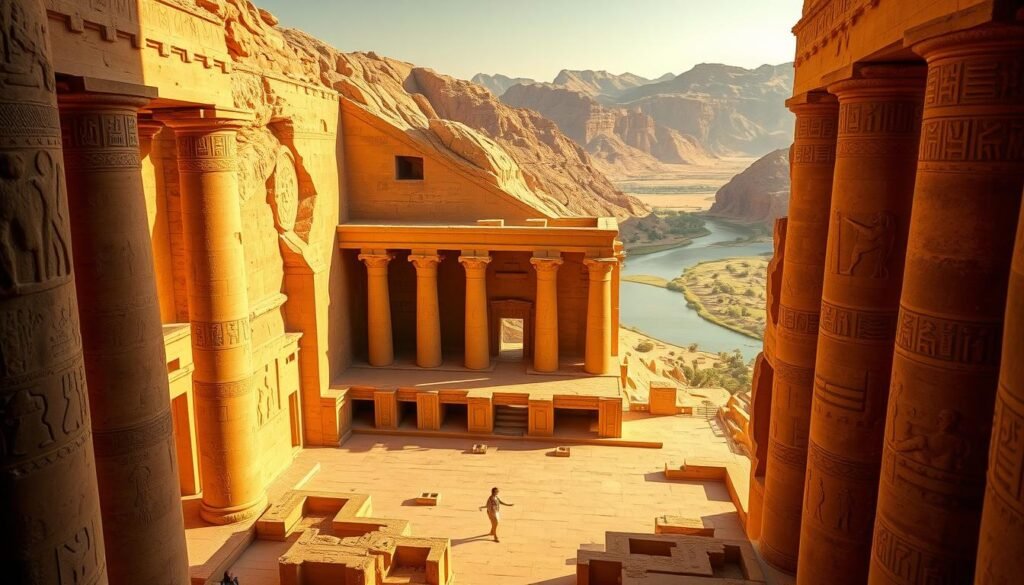
The site honors one of Egypt’s most powerful rulers and tells her story through detailed reliefs. These panels recount her divine birth, trade expeditions, and achievements across her years of rule.
Photographers should aim for early morning light. Soft sun reveals texture on the cliff and keeps temperatures comfortable while you climb the terraces.
- Pairing: Visit with the Valley of the Kings in the same West Bank morning to save transfer time.
- Guide tip: A guide highlights narrative reliefs and architectural innovations you might miss alone.
- Practical: Wear supportive shoes, bring water and a hat, and respect barriers to protect fragile reliefs.
“Climb the terraces and look back—the views place the temple within the wider necropolis and give real scale to this remarkable site.”
| Feature | Best Time | Why it helps |
|---|---|---|
| Terrace views | Morning | Soft light; cooler climb; clearer photos |
| Relief panels | With a guide | Explains scenes of royal life and expeditions |
| Site etiquette | All visits | Stay behind barriers; avoid touching reliefs |
Arrange combined West Bank morning tours: Booking@blackcameltours.com | +43 660 9081449.
Colossi of Memnon: Towering Statues Greeting the West Bank
If you pause between West Bank sites, the Colossi of Memnon offer a powerful and compact photo moment. These two 18‑meter seated figures represent Amenhotep III and once marked the entrance to his vast mortuary temple complex.
The twin statues act as a symbolic gateway to the area and make an easy, quick stop for pictures. Visit in the morning when the light is soft and tour traffic is lighter for cleaner shots.
Step closer to see weathering, repair marks, and restoration work that tell a story of age and resilience. A guide can explain how the vanished complex behind the statues may once have rivaled other major places by footprint.
“A brief visit here gives a memorable first impression of the West Bank while keeping your schedule on track.”
- Timing: Short morning stop for best light and fewer people.
- Pairing: Combine with Hatshepsut’s Temple and the Valley of the Kings for efficient touring.
- Booking: Add a quick photo stop en route: Booking@blackcameltours.com.
| Feature | Why it matters | Suggested visit time |
|---|---|---|
| Height & scale | 18 m seated figures showcase royal power | Morning |
| Context | Entrance to Amenhotep III’s mortuary complex | Short stop (15–30 min) |
| Visitor tip | Close inspection reveals restoration history | With a guide |
More West Bank Wonders: Medinet Habu, Valley of the Queens, Deir el-Medina, and the Ramesseum
Walk the quieter West Bank lanes to find grand pylons, village streets, vivid tombs, and scattered ruins that reward slow exploration.
Medinet Habu is famous for colossal pylons and carved battle scenes of Ramesses III. The reliefs portray clashes with the Sea Peoples and ritual moments that show royal power across the years.
Artisans’ life at Deir el‑Medina
Deir el‑Medina reveals the village of tomb builders. Small tombs here burst with color and daily scenes that give a human-scale view of craft and faith.
Ramesseum and the Valley of the Queens
The Ramesseum offers ruined grandeur, including a toppled colossal statue that hints at Ramesses II’s ambition. The Valley of the Queens is quieter than the Kings but holds showstoppers like Nefertari’s tomb when open.
Plan your time: pick two sites for a deep afternoon or set aside a full day to cover all four. A knowledgeable guide helps decode reliefs and select the most vivid artisan tombs available.
“Ticket structures can change quickly—check access and any special entry fees before you go.”
Note: Nefertari’s tomb was closed as of March 2, 2024. For current access and price details, contact Booking@blackcameltours.com | +201080733101.
Sunrise Hot Air Balloon Over Luxor: Ancient Thebes from the Air
A sunrise balloon ride gives you a bird’s-eye view of tombs, terraces, and the river corridor before the day warms up.
The flights start very early; pickups usually run between 3:00 and 4:30 am to reach the launch site in time for first light. Expect a quiet, sky‑soft hour where temples and fields look woven together below.
Floating over the West Bank changes perspective. You see how the necropolis sits beside the Nile and why rulers chose these spots. The calm and scale make the view feel almost mythic.
- Dress in layers for cool mornings and bring a secure strap for phones or cameras.
- Confirm pick-up time the night before and plan a flexible day—weather may delay flights.
- Book with vetted, safety‑forward operators and arrange post‑flight transport straight to your West Bank tour.
“A balloon morning is the best way to combine awe, photography, and efficient touring.”
| Pickup | Typical start time | Why it helps |
|---|---|---|
| Hotel collection | 3:00–4:30 am | Ensures reach to launch before dawn |
| Flight | Sunrise | Soft light; broad aerial perspective |
| After landing | Early morning | Head to West Bank tours refreshed |
Book early pick-ups and safe operators via Booking@blackcameltours.com to secure a smooth start to your day.
Philae Temple in Aswan: Island Sanctuary Rescued from the Waters
Arriving by boat, you meet Philae as both a temple complex and a conservation triumph. Dedicated to Isis, it was moved stone‑by‑stone to Agilkia Island after the dam project threatened the original site.
The island location creates calm views across the nile river and a compact, photogenic scene. Sunset adds warmth to carved reliefs and highlights reassembled buildings.
“Visit about an hour before sunset to explore and then watch golden light outline the colonnades.”
- Boat approach: short, scenic, and the only way to reach the site.
- Relocation story: a UNESCO-listed rescue completed in the 1960s–70s that preserves priceless art.
- Guided tour: brings Isis mythology and inscriptions to life while pointing out reassembled blocks.
- Practical tips: comfortable shoes for island paths and allow time to arrange or confirm transfer time.
- Pairings: combine Philae with the Unfinished Obelisk and a felucca glide for a varied Aswan day focused on engineering and elegance.
| Feature | Why it matters | Suggested timing |
|---|---|---|
| Relocation to Agilkia | Saved the site from flooding; UNESCO-listed | Allow 60–90 minutes |
| Boat transfer | Scenic arrival; only access route | Plan pickup 90 min before sunset |
| Sunset light | Enhances reliefs and island silhouettes | Arrive ~1 hour before sunset |
| Guided tour | Explains inscriptions, goddess myths, and masonry | Book a guide or include with private transfers |
Coordinate boat transfers and sunset timing: Booking@blackcameltours.com | +43 660 9081449.
Unfinished Obelisk and the Story of Ancient Stonework
The Unfinished Obelisk sits where ancient labor stopped mid-carve, giving a unique view of stonework from past years. This quarry site reveals how craftsmen scored channels, used wedges, and shaped a single granite monolith destined for temple plazas.
Look closely at the tool marks, trenches, and cutting channels. The dramatic crack that split the obelisk froze the process and shows scale and technique you rarely see elsewhere.
What to notice: visible chisel strikes, stepped planning lines, and the bedrock socket where the obelisk would have sat as it was eased out.
- Visit with a guide who links quarry methods to the great pylons and obelisks you will see later.
- Wear sturdy shoes; surfaces are uneven and sun-exposed. Bring water and a hat to stay comfortable.
- Pair this stop with Philae and the High Dam for a full Aswan engineering and history day.
“Add this stop to your Aswan touring plan: Booking@blackcameltours.com.”
Abu Simbel: Colossal Statues of Ramesses II on Lake Nasser
The approach to Abu Simbel feels cinematic: rock, water, and the sheer scale of Ramesses II’s facade. Visitors arrive early to see the four carved figures glow in soft light and avoid the midday crowds.
Great vs. Lesser Temples
The Great Temple honors Ramesses II with a monumental façade and long interior halls filled with battle and ritual reliefs. The Lesser Temple is dedicated to Nefertari and Hathor and offers a smaller, richly detailed interior that rewards close study.
Logistics: bus, flight, and timing considerations
Most tours depart before dawn to beat heat and crowds. Travel options include a budget-friendly bus convoy or a short flight from Aswan; flights save time but cost more.
“Go early—the dawn light makes the statues dramatic and the site easier to explore.”
- Relocation: In the 1960s UNESCO-led engineering moved both temples above Lake Nasser to save them.
- On-site tip: Walk inside to study reliefs showing battles and royal ceremonies; follow photography rules to protect the art.
- Booking: Secure seats or flights and timed departures: Booking@blackcameltours.com | +201080733101.
| Aspect | Bus Convoy | Flight |
|---|---|---|
| Cost | Lower | Higher |
| Duration | 3–4 hours each way (early start) | Under 1 hour each way |
| Best use | Budget travel and group rhythm | Save time; fit into tighter schedules |
Kom Ombo Temple: Dual Dedication to Sobek and Horus with Greco-Roman Details
On many cruise itineraries, Kom Ombo appears as an elegant late-day stop where twin shrines catch warm light.
The site dates to the 2nd century BCE and shows clear Greco-Roman period influences. Its rare dual dedication means two mirrored entrances, twin chapels, and paired sanctuaries—one side honors Sobek, the crocodile god, the other honors Horus the falcon.
The reliefs combine Egyptian motifs with Roman-era portraits of emperors making offerings. These panels tell a layered history of cultural blending that a guide can unpack quickly.
Look for the medical reliefs and the nearby crocodile mummies display if your cruise stop includes the small museum. Late afternoon or evening visits work well; the angled light highlights columns and carved scenes.
“Pair Kom Ombo with Edfu on a cruise day to see two contrasting Ptolemaic temples in one efficient schedule.”
Include Kom Ombo on cruise-day stops: Booking@blackcameltours.com.
Top Historical Experiences in Luxor & Aswan for First-Time Visitors: Suggested 1-3 Day Plans
Smart sequencing of sites turns a short stay into a clear, satisfying experience.
One-day highlights
Start early at the Valley of the Kings to beat heat and crowds. Follow with Hatshepsut and Medinet Habu, then stop briefly at the Colossi of Memnon.
Cross to the East Bank mid-afternoon for Karnak, and finish at Luxor Temple near sunset for the best light.
Two-day structure
Dedicate one full day to West Bank places and a second day to the East Bank monuments and museums. This split gives depth without rush and lets you rest between busy mornings.
Three-day options
Use two days for West Bank exploration and a third day for an Aswan day trip (Philae and the Unfinished Obelisk) or extra tomb access. Swap in premium tombs or special passes based on interest and time.
Practical tip: Rise early, plan lunch breaks, and keep water handy to manage heat and energy.
“A local guide and private driver are the easiest way to cover more places while wasting less time on logistics.”
Want a custom pace or reservations? Email Booking@blackcameltours.com or WhatsApp +43 660 9081449 | +201080733101.
Practical Planning: Best Time to Visit, Passes, Transport, and Where to Stay
Smart timing and simple logistics make sightseeing here smoother than most travelers expect.
Best time: Travel between November and March for cooler days. December–January bring the biggest crowds, so book hotels and transfers early.
If you visit in summer, start early, rest midday, stay hydrated, and wear sun protection. Plan morning visits to major sites when light and temperatures are kinder.
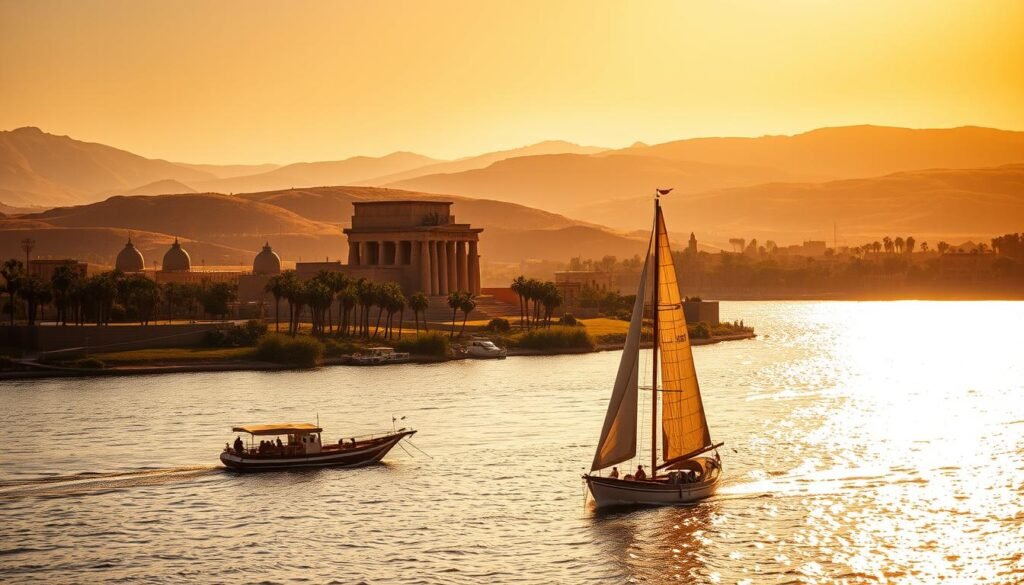
Passes, price, and tickets
The Luxor Pass covers most entries; a Premium pass adds Seti I and Nefertari. Compare entrance fees and exchange rates before you buy to see which option gives the best price.
Getting around
Flights to the city save time. Overnight sleepers from Cairo are budget-friendly. Trains between Luxor and Aswan run in 2.5–3.5 hours.
Guide vs. taxis: A private guide and driver streamline transfers, handle ticketing, and save time on site. Taxis work for short hops but add unpredictability.
Food and hotel picks
East Bank dining highlights include Sofra and Al‑Sahaby Lane; Marsam offers West Bank courtyard meals. For stays, consider Sofitel Winter Palace, Hilton Luxor Resort & Spa, or budget options like Nefertiti Hotel and Nile Castle.
“Contact a guide to align trains, flights, and hotel transfers for smooth arrival timing.”
Bookings & updated pass info: Booking@blackcameltours.com | +43 660 9081449 | +201080733101 | blackcameltours.com
Plan and Book with Black Camel Tours
A tailored plan and a reliable local team make every site visit run smoothly. Black Camel Tours aligns East and West Bank highlights with pacing that fits your needs. Private drivers simplify transfers and save time so you see more without stress.
Expert-guided itineraries, private drivers, and Nile cruise coordination
Egyptologist guides bring sites to life through storytelling, smart routing, and entry strategies that cut queues and focus your day. A private driver keeps your schedule flexible and moves you efficiently between hotel and sites.
Combine guided days with free time so you learn, relax, and still explore on your own terms.
Booking and questions
Black Camel Tours coordinates cruise options and curated shore tours, plus special extensions to Kom Ombo, Edfu, or Abu Simbel. They handle on-the-ground changes, dining reservations, and hotel coordination for first-time visitors.
- Email or WhatsApp for quick quotes and bespoke recommendations.
- Share must-see priorities—tombs, photo goals, or relaxed pacing—and guides will shape the days.
- Expect prompt, friendly support during your trip.
| Service | Benefit | Best use |
|---|---|---|
| Guide | Deep storytelling & faster entry | Complex sites and tomb selection |
| Private driver | Flexible pacing; safe transfers | Multi-site days and early starts |
| Cruise coordination | Paired day tours and extensions | Combine river rest with curated stops |
| Trip support | Real-time adjustments & bookings | Dining, hotel, and transit changes |
📩 Booking: Booking@blackcameltours.com | 📞 Call/WhatsApp: +43 660 9081449 | +201080733101 | 🌐 blackcameltours.com
Conclusion
A well-planned visit ties river scenes, island temples, and colossal monuments into a single, memorable trip. These are the best things to see when you want big moments without wasted hours.
Plan your time so major sites fall in early morning or late afternoon. That helps you enjoy light, avoid crowds, and make each stop count.
A local guide turns carved walls and ruined façades into clear stories. They help people pick the right mix of famous and quieter places to deepen your understanding.
Mix must-see monuments with a few calm sites, and your travel will feel balanced and rich. , Ready to plan? 📩 Booking@blackcameltours.com | 📞 +43 660 9081449 | +201080733101 | 🌐 blackcameltours.com.
